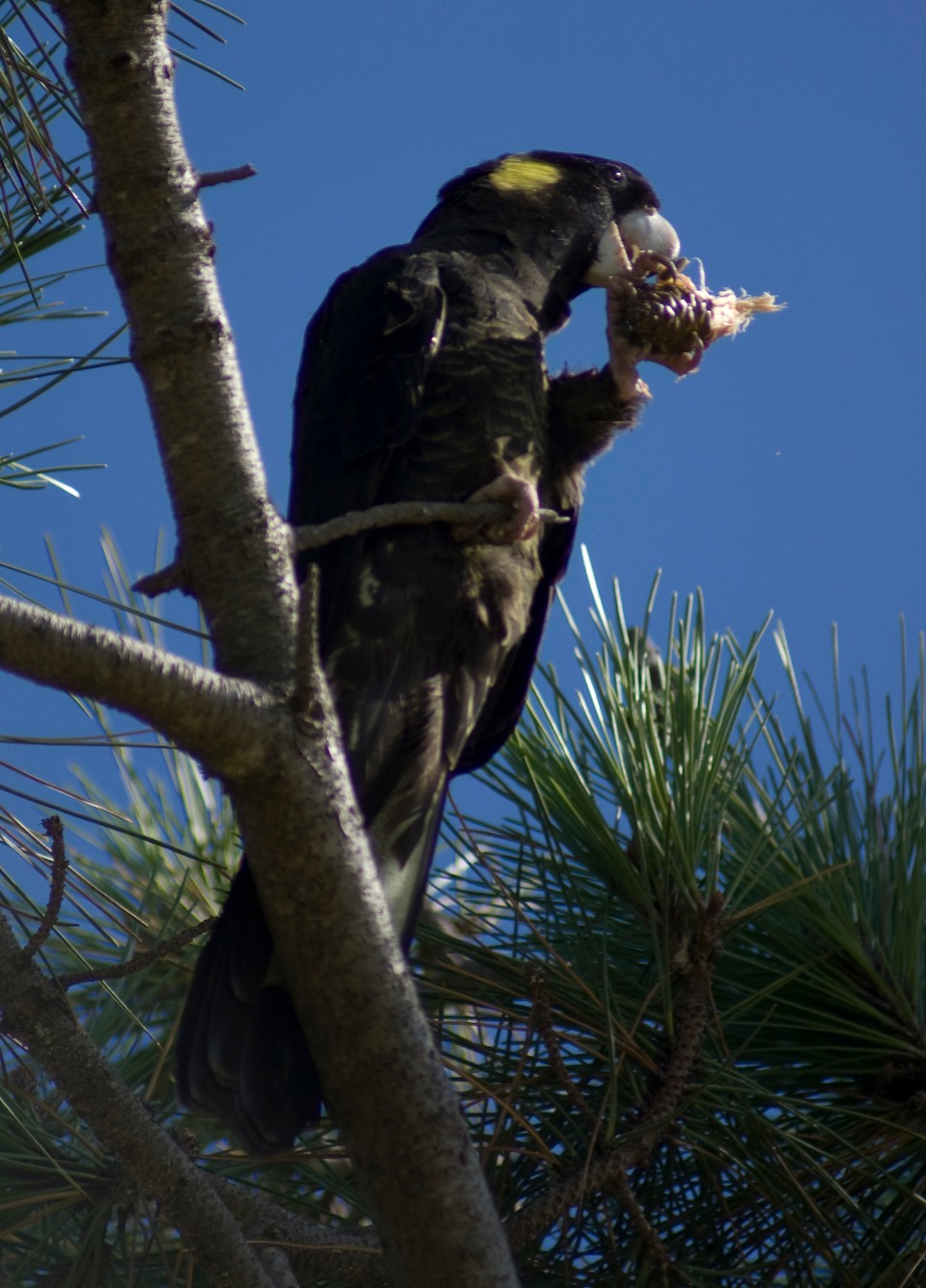Yellow-tailed Black Cockatoo
A species of Calyptorhynchus Scientific name : Zanda funerea Genus : Calyptorhynchus
Yellow-tailed Black Cockatoo, A species of Calyptorhynchus
Botanical name: Zanda funerea
Genus: Calyptorhynchus
Content
Description People often ask General Info
 Photo By Snowmanradio , used under CC-BY-SA-2.0 /Cropped and compressed from original
Photo By Snowmanradio , used under CC-BY-SA-2.0 /Cropped and compressed from original Description
The yellow-tailed black cockatoo is 55–65 cm (22–26 in) in length and 750–900 grams in weight. It has a short mobile crest on the top of its head, and the plumage is mostly brownish-black with paler feather-margins in the neck, nape, and wings, and pale yellow bands in the tail feathers. The tails of birds of subspecies funereus measure around 33 cm (13 in), with an average tail length 5 cm (2.0 in) longer than xanthanotus. Male funereus birds weigh on average around 731 g (1.612 lb) and females weigh about 800 g (1.8 lb). Birds of the xanthanotus race on the mainland average heavier than the Tasmanian birds; the males on the mainland weigh on average around 630 g and females 637 g (1.404 lb), while those on Tasmania average 583 and 585 g (1.290 lb) respectively. Both mainland and Tasmanian birds of the xanthanotus race average about 28 cm (11 in) in tail length. The plumage is a more solid brown-black in the eastern subspecies, while the southern race has more pronounced yellow scalloping on the underparts. The male yellow-tailed black cockatoo has a black bill, a dull yellow patch behind each eye, and pinkish or reddish eye-rings. The female has grey eye-rings, a horn-coloured bill, and brighter and more clearly defined yellow cheek-patches. Immature birds have duller plumage overall, a horn-coloured bill, and grey eye-rings; The upper beak of the immature male darkens to black by two years of age, commencing at the base of the bill and spreading over ten weeks. The lower beak blackens later by four years of age. The elongated bill has a pointed maxilla (upper beak), suited to digging out grubs from tree branches and trunks. Records of the timing of the eye ring changing from grey to pink in male birds are sparse, but have been recorded anywhere from one to four years of age. Australian farmer and amateur ornithologist John Courtney proposed that the similarity between juvenile and female eye rings prevented adult males becoming aggressive to younger birds. He also observed the eye rings to flush brighter in aggressive males. Moulting appears to take place in stages over the course of a year, and is poorly understood. The yellow-tailed black cockatoo is distinguished from other dark-plumaged birds by its yellow tail and ear markings, and its contact call. Parts of its range overlap with the ranges of two cockatoo species that have red tail banding, the red-tailed cockatoo and the glossy black cockatoo. Crow species may appear similar when seen flying at a distance; however, crows have shorter tails, a quicker wing beat, and different calls. An all-yellow bird lacking black pigment was recorded in Wauchope, New South Wales, in December 1996, and it remained part of the local group of cockatoos for four years. Birds with part-yellow plumage have been recorded from different areas in Victoria. 
Size
60 cm
Colors
Brown
Black
Yellow
Life Expectancy
41 years
Nest Placement
Tree
Feeding Habits
Yellow-tailed Black Cockatoo primarily consumes seeds and insect larvae. Their diet consists of a variety of food types, showcasing unique foraging methods that involve stripping bark to locate wood-boring grubs. Their strong bill is a specialized adaptation for extracting hidden larvae, revealing a dietary preference for these protein-rich sources.
Habitat
Coastal heath, woodland, forest, pine plantations along coast, adjoining Great Dividing Range
Dite type
Carnivorous
People often ask
General Info
Feeding Habits
Bird food type
Bird Feeder Type

Platform
Behavior
They make long journeys by flying at a considerable height while calling to each other, and they are often seen flying high overhead in pairs, or trios comprising a pair and their young, or small groups. Outside of the breeding season in autumn or winter they may coalesce into flocks of a hundred birds or more, while family interactions between pairs or trios are maintained. They are generally wary birds, although they can be less shy in urban and suburban areas. 
Distribution Area
The yellow-tailed black cockatoo is found up to 2,000 m (6,600 ft) above sea level over southeastern Australia including the island of Tasmania and the islands of the Bass Strait (King, Flinders, Cape Barren islands), and also on Kangaroo Island. On Tasmania and the islands of the Bass Strait it is the only native black-coloured cockatoo. 
Scientific Classification
Phylum
Chordates Class
Birds Order
Parrots Family
Parrots Genus
Calyptorhynchus Species
Yellow-tailed Black Cockatoo